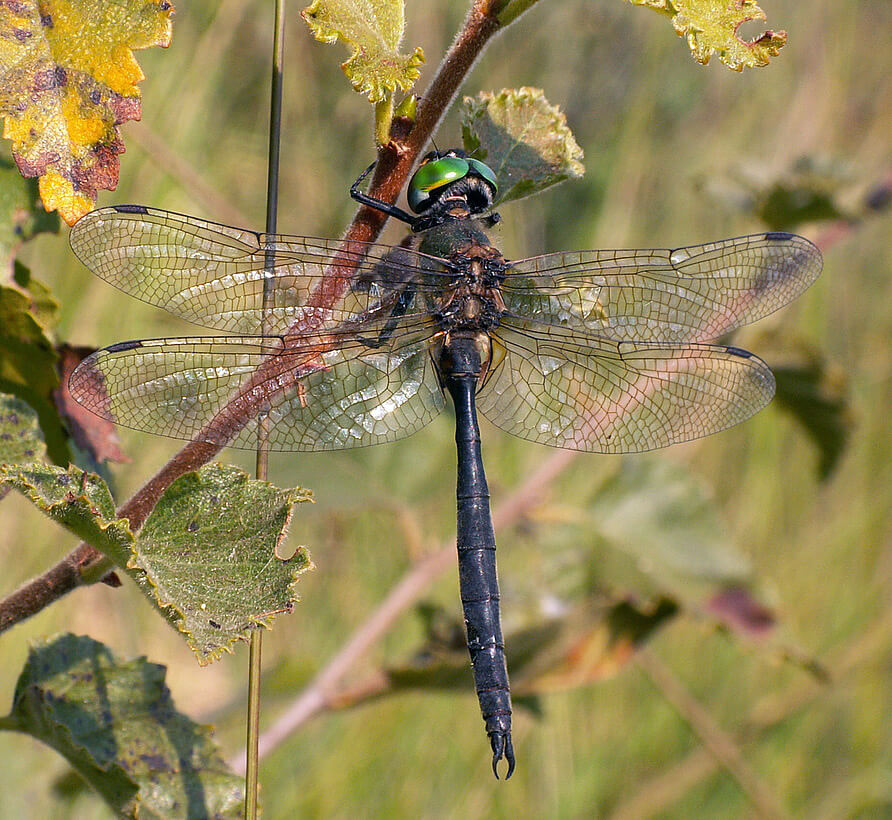Species Information:
Length: 50-55mm
Flight Period: June to August (occasionally May and September)
The Northern Emerald has bluish-green (sometimes yellowish) eyes. The wings are faintly suffused with saffron. The thorax are metallic bronze green but the abdomen is quite dark.
The Brilliant Emerald has apple green eyes and the abdomen and thorax are dark metallic emerald green with a bright bronze sheen. The wings are suffused by saffron, particularly in the female.
Male: abdomen is slightly club-shaped.
Female: the vulvar scale is the most distinctive feature as it is long and pointing downwards from the base of the abdomen. Both sexes have long anal appendages which may be visible in flight.
Habitat:
Habitats occupied by S. metallica in Scotland and in southeast England are only broadly similar: sheltered, standing or slow-flowing waters usually, but not always, edged with good tree cover.
Larvae need a place to hide underwater and ideally need the dark - i.e. shade provided by trees, overhanging banks, etc.
Water bodies ideally but not exclusively need to have a soft peaty or muddy substrate, often overlaid with leaf litter.
Status & Distribution:
The Brilliant Emerald is considered to be a nationally rare species. Using the IUCN categories, the Brilliant Emerald is considered to be endangered in the UK.
Threats:
The main threats to this species come from over-management or lack of appropriate management, deforestation, reduction in water levels, pollution and the introduction of fish.
Management:
General management principles include maintaining water levels and targeting survey work to map emergence sites. There are also best practice guidelines for managing inhabited sites including sensitive cutting of emergent vegetation, dredging and pruning.
Similar Species:
The Downy Emerald and Northern Emerald are somewhat similar in appearance.
.jpg)
.jpg)
.jpg)

